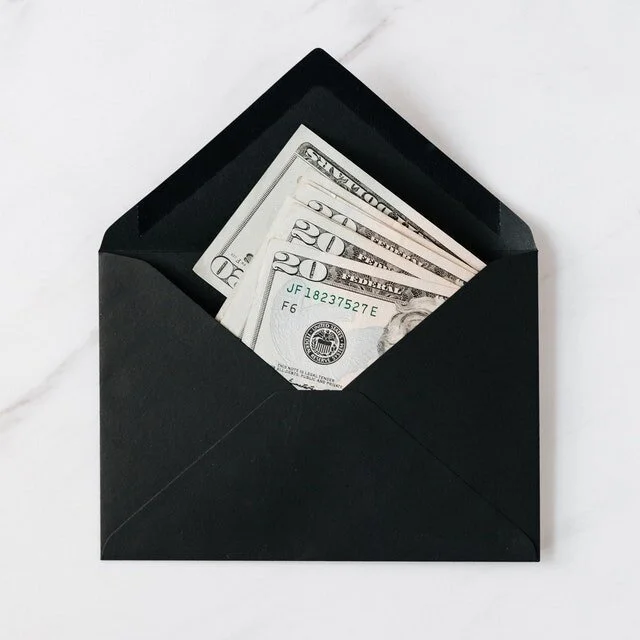Can you spot the flaws in the Billion Dollar Letter?
In 1974, The Wall Street Journal began sending out a letter that ran for nearly 30 years and sold $2 billion worth of subscriptions. You can read the full letter here. There are flaws in this letter—you’ll learn about them soon. First, take a moment to see why this letter is effective. It begins with a story:
On a beautiful late spring afternoon, twenty-five years ago, two young men graduated from the same college. They were very much alike, these two young men. Both had been better than average students, both were personable and both—as young college graduates are—were filled with ambitious dreams for the future.
Recently, these men returned to their college for their 25th reunion.
They were still very much alike. Both were happily married. Both had three children. And both, it turned out, had gone to work for the same Midwestern manufacturing company after graduation, and were still there.
But there was a difference. One of the men was manager of a small department of that company. The other was its president.
Why does this story work?
Hats off to Martin Conroy, the freelance copywriter who wrote the letter as an appeal from the newspaper’s publisher, Peter R. Kann. With a 120-word story, he warms up the reader for the sales pitch using a plainspoken, direct style that gets straight to the point. No literary flourishes here. Just a simple set-up and payoff. You expect some sort of revelation by the fact that “they were very much alike, these two young men.” The repeated use of the word “both” (in the 120 words, it appears six times) heightens the comparison, and gives you the feeling that whatever sets them apart will be important. A few sentences later, when we learn that one of the men is the company president while the other languishes in lower management, we’re primed for the question that follows: “Have you ever wondered, as I have, what makes this kind of difference in people's lives?”
Your map to corporate presidency may be folded on this humble barrel.
Mr. Kann tells us—reassures us—that what makes the difference isn’t intelligence, talent, dedication, or desire for success. “The difference,” he claims, “lies in what each person knows and how he or she makes use of that knowledge.” In this case, presumably, it’s the kind of knowledge you can gain from reading The Wall Street Journal.
Is this too much of a stretch?
Maybe. Most people would have a hard time denying that knowledge is important for success. People who know absolutely nothing often have a hard time climbing the corporate ladder. And there’s something comforting in Mr. Kann’s implication that success is a secret recipe that some people know and others don’t, and that these secrets can be yours for the bargain rate of $149 per year. But this is where you encounter the first flaw. He never tells you whether or not the president of the company actually read The Wall Street Journal.
A typical front page of The Wall Street Journal.
There’s another flaw. It doesn’t come in the letter’s final paragraph, when Mr. Kann softens expectations: “I cannot promise you that success will be instantly yours if you start reading The Wall Street Journal.” This makes the claim more reasonable, as it ought to be. Who knows whether a newspaper will tell you relevant business knowledge (possibly) and tell you how to make use of it (unlikely)? You may learn that the Dow is up or down a thousand points, or that the Fed plans to cut or raise the prime rate, but even the “world’s largest staff of business-news experts,” as the letter puts it, can’t get you promoted. (Success in business isn’t a prerequisite for success as a business-news expert.)
No, the other flaw implies that maybe reading the Wall Street Journal isn’t as useful as suggested. Mr. Kann states about his offer for a discounted subscription, “If you feel as we do that this is a fair and reasonable proposition, then you will want to find out without delay if The Wall Street Journal can do for you what it is doing for millions of readers.” This is a fine statement in terms of “social proof”—we have the accurate and impressive statistic that there are millions of people reading The Wall Street Journal. But it undermines the upshot of the opening story. Millions of people may read The Wall Street Journal. Millions of people aren’t returning to their 25th college reunion to find out that they are the winners in life and that they owe their success to reading a newspaper.
In spite of its flaws—or perhaps because of them—the Billion Dollar Letter is a solid example of using a story to set the stage for the sales pitch that follows. The story silences your inner cynic. Flaws become easier to overlook. You let yourself get swept along. If you can tell a good story, you can get away with a lot—about $2 billion worth.


